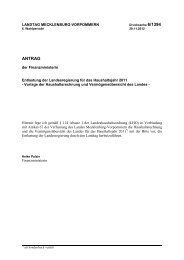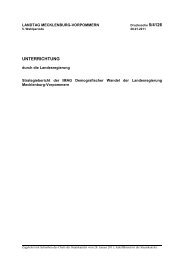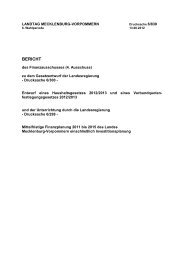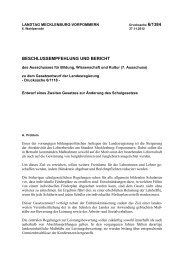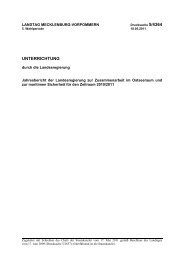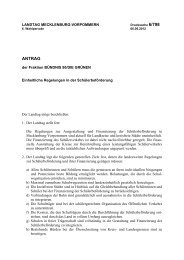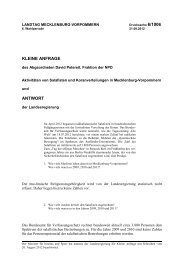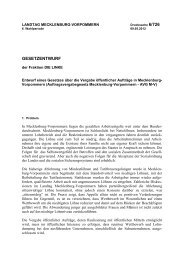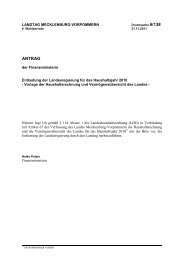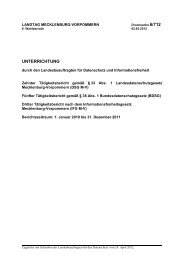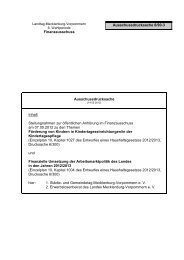Baltic Rim Economies - Baltic Port List
Baltic Rim Economies - Baltic Port List
Baltic Rim Economies - Baltic Port List
You also want an ePaper? Increase the reach of your titles
YUMPU automatically turns print PDFs into web optimized ePapers that Google loves.
Expert article 857 <strong>Baltic</strong> <strong>Rim</strong> <strong>Economies</strong>, 21.12.2011 Quarterly Review 5�2011<br />
Challanges for the EU from the perspective of external audit and accountability<br />
By Olavi Ala-Nissilä<br />
The European Court of Auditors (ECA) - or simply the Court -<br />
is the independent audit institution of the European Union. The<br />
Lisbon Treaty, which entered into force two years ago,<br />
confirmed ECA’s position as one of the seven Institutions of<br />
the European Union. The Court is based in Luxembourg and<br />
has a staff around 900 professionals from all EU nationalities.<br />
Since its creation in 1977, the Court has focused its attention<br />
on the importance of EU financial management. The Court’s<br />
mission is to act as an independent guardian of the financial<br />
interests of the citizens of the Union. It is a mighty challenge<br />
and requires constant alertness especially in these<br />
economically difficult times.<br />
The Court’s principal tasks are to carry out financial and<br />
compliance audits, principally in the form of the statement of<br />
assurance (or DAS); and performance audits of topics selected<br />
to maximise the impact of its work. In addition, ECA produces<br />
opinions on proposed regulations related to budgetary<br />
management and other issues of importance. During the past<br />
three years the Court has – on its own initiative – tackled also<br />
some other important issues, like EU budget reform and<br />
economic and financial crisis, in the form of position papers,<br />
reflections and contributions.<br />
The annual report on the implementation of the EU budget<br />
is ECA’s main product. The report mainly comprises the DAS<br />
opinion on the EU budget as a whole and specific<br />
assessments of various policy groups, and is published each<br />
year in November. The latest annual report – 34th overall –<br />
was published on 10 November 2011 covering the financial<br />
year 2010. The payments made from the EU budget in 2010<br />
were EUR 122,2 billion.<br />
The ECA’s statement of assurance – déclaration<br />
d’assurance (DAS) – is based on objective evidence obtained<br />
in particular from audit testing in accordance with international<br />
audit standards. The statement includes two parts: reliability of<br />
the accounts and regularity of transactions (there are three<br />
types of transactions: revenue, commitments and payments).<br />
In its latest annual report, concerning the financial year<br />
2010, the Court found that the accounts present fairly the<br />
financial position of the European Union and the results of its<br />
operations and its cash flows for the year. However, the<br />
payments underlying these accounts were affected by material<br />
error, with an estimated error rate of 3,7 % for the EU budget<br />
as a whole.<br />
The Court’s estimated error rate for spending in Cohesion,<br />
energy and transport policy group (the most error prone EU<br />
spending area) was higher than for 2009, with an estimated<br />
error rate of 7,7 %. For the other areas of EU spending the<br />
estimated error rate remained relatively stable. This applies<br />
also to the biggest area of EU budget expenditure, agriculture<br />
and natural resources, where the estimated error rate was 2,3<br />
%. However, the estimated error rate for the main part of that<br />
policy area, i.e. direct payments covered by the Integrated<br />
Administrative Control System (IACS), was below materiality<br />
level of 2 %.<br />
In relation to performance audits, the Court’s objective is to<br />
produce annually 12-15 special reports on the various themes.<br />
When selecting topics the Court considers i.a. the risks to<br />
performance for the particular area of expenditure, the level of<br />
spending involved, the time elapsed since any previous audits<br />
and political/public interest. In the performance audits the<br />
Court assesses the economy, efficiency and effectiveness of<br />
the selected areas. If there were one common theme on the<br />
various performance audits carried out by the Court in previous<br />
year, it would have to do with the importance of the planning<br />
phase. In particular, the Court concluded that when planning<br />
5<br />
and implementing EU spending programmes, the Commission<br />
and the Member States should pay greater attention to<br />
defining objectives that are specific, measurable, achievable,<br />
relevant and timed - as well as to identifying and mitigating the<br />
risks to implementation.<br />
On the basis of the Court’s audit findings and despite<br />
many years of incremental improvements in systems, there<br />
remain significant risks to the regularity of payments that can<br />
only be fully addressed by reforming legislative frameworks<br />
and re-designing control systems. The proposals for sectoral<br />
legislation governing spending after 2014 and for new financial<br />
regulation provide an opportunity to do that. The Commission,<br />
the European Parliament and the Member States have now<br />
real golden opportunity to improve the financial management<br />
of the Union.<br />
In past few years there have been a number of significant<br />
developments in EU economic governance which raise<br />
important issues of transparency and increase the risk of gaps<br />
in accountability and public audit developing. Those<br />
developments in mind, the Court published in May 2011 a<br />
position paper on consequences for public accountability and<br />
public audit in the EU and the role of ECA in the light of current<br />
financial and economic crisis. The Court identified cases where<br />
public audit arrangements are not adequate. More specifically,<br />
the Court considered that the Treaty establishing the European<br />
Stability Mechanism should include provisions for public<br />
external audit. The general message of the position paper was<br />
that where public funds are at stake there should be adequate<br />
arrangements for transparency, public accountability and<br />
public audit. Similar concerns for adequate public<br />
accountability and public audit were highlighted in the<br />
statement and resolutions of the Contact Committee of the<br />
Heads of the EU Supreme Audit Institutions in October 2011.<br />
Promoting transparency and accountability is a<br />
responsibility all institutions share in democratic societies. It is<br />
even more crucial in the current context where the pressure on<br />
public finances is high, the importance of the EU meeting its<br />
objectives is great, and the need to build the confidence and<br />
trust of citizens in the European Union and its institutions is<br />
acute.<br />
Many prominent economists have called this crisis the<br />
worst since the Great Depression of 1930s. We are definitively<br />
now in a global crisis. In Europe, the impact has been felt, not<br />
only around Mediterranean Sea, but also around <strong>Baltic</strong> Sea.<br />
Drastic savings measures have been taken to regain the<br />
confidence. The results have been more positive around the<br />
<strong>Baltic</strong> Sea. However, the decisive factor at the end of the day<br />
will be the competitiveness and ability to grow and perform in<br />
sustainable way in ever tougher global competition. The crisis<br />
provides always opportunities. This crisis is too expensive to<br />
be wasted.<br />
I invite all the readers to look for more information on the<br />
Court’s our role and work in our website www.eca.europa.eu<br />
Olavi Ala-Nissilä<br />
Member of the European Court<br />
of Auditors, Dean<br />
European Court of Auditors<br />
� Pan-European Institute � To receive a free copy please register at www.tse.fi/pei �



